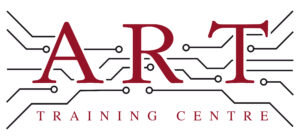Definition
Dewetting is a phenomenon in electronics manufacturing where a liquid, such as solder, fails to spread evenly over a surface, resulting in the formation of beads or gaps. This can occur on printed circuit boards (PCBs) during soldering or rework processes. Dewetting can lead to poor electrical connections and is considered a fault that needs to be addressed to ensure reliable electronic assemblies.
How It’s Used in the Industry
Dewetting is critical in electronics assembly, particularly during soldering processes involving PCBs. When solder is applied, it should form a uniform layer to ensure good electrical connectivity. If dewetted areas are present, technicians must identify and rectify these faults through inspection techniques, such as visual checks or using magnification tools. For technicians in training, understanding dewetting helps them recognise and prevent potential defects. Experienced professionals must also be aware of dewetting to maintain high-quality standards in production and rework, ensuring that all connections are reliable and meet IPC guidelines.
History & Origins
Dewetting became a recognised issue in electronics manufacturing in the late 20th century as the industry evolved with the introduction of surface mount technology (SMT). Early standards, such as those developed by IPC, highlighted the significance of soldering quality and the need to address dewetting. As manufacturing processes advanced and components became smaller, the impact of dewetting on performance and reliability became more pronounced, prompting further research and development of methods to mitigate this fault.
Variations
There are different types of dewetting, including thermal dewetting, which occurs when solder cools too quickly, and chemical dewetting, which is caused by contaminants on the surface. Dewetting can be compared to other soldering faults like solder bridging, where excess solder connects unintended pads. Understanding these variations helps technicians distinguish between different soldering issues, enabling them to apply appropriate solutions during assembly and repair processes.
Modern Applications
Today, dewetting remains a significant concern in electronics production, especially in advanced assembly techniques such as surface mount and through-hole soldering. Effective management of dewetting is essential for ensuring the quality and reliability of electronic devices. Compliance with IPC standards is crucial, as these standards provide guidelines for best practices in soldering and inspection. Addressing dewetting effectively contributes to the overall integrity of electronic assemblies, making it a vital focus in both production and professional training.
Practical Tips & Training
To effectively manage dewetting, technicians should ensure clean surfaces before soldering and use appropriate soldering techniques. Regular inspection using magnification tools can help identify dewetting early in the process. Safety is paramount, so technicians should wear protective gear when handling soldering equipment. Structured training and certification in electronics are essential for understanding dewetting and other soldering issues, equipping professionals with the skills needed to maintain high-quality standards in their work.


